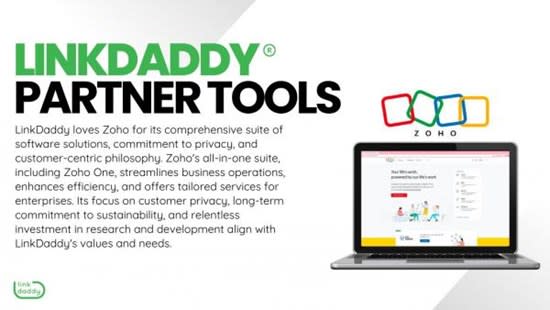LinkDaddy Cloud Services Summary: Equipping Companies Internationally
LinkDaddy Cloud Services Summary: Equipping Companies Internationally
Blog Article
Recognizing the Various Sorts Of Cloud Solutions and Their Usages
In today's digital landscape, the realm of cloud computer offers a diverse range of solutions that accommodate the needs of services and people alike. From Framework as a Solution (IaaS) to Software as a Service (SaaS), each sort of cloud solution offers an unique function and supplies distinctive benefits. Comprehending the differences in between these different cloud models is critical for maximizing procedures, improving scalability, and guaranteeing cost-efficiency in a significantly interconnected world. By exploring the nuanced functionalities and applications of each cloud solution, one can browse the complexities of cloud computer with precision and foresight.
Facilities as a Service (IaaS)
Facilities as a Service (IaaS) offers users with virtualized computing resources online on a pay-as-you-go basis. This cloud computing model delivers vital IT facilities such as virtual devices, storage, and networking without the need for companies to purchase and handle physical servers and data facilities. With IaaS, customers can scale resources up or down based on their needs, supplying adaptability and cost-efficiency.
One of the essential advantages of IaaS is its capability to quickly arrangement and release infrastructure components, making it possible for organizations to respond quickly to transforming needs and market problems. By outsourcing facilities administration to the provider, organizations can concentrate much more on their core business tasks rather than managing the intricacies of hardware upkeep and upgrades.
Furthermore, IaaS offers a high degree of reliability and security, with companies generally supplying robust information backup, catastrophe recovery, and cybersecurity actions. This assists make certain that vital business operations continue to be uninterrupted and data remains secured versus potential hazards. linkdaddy cloud services. On the whole, Infrastructure as a Solution simplifies IT operations, improves scalability, and reduces capital investment for services of all dimensions
System as a Service (PaaS)
Structure upon the foundation of Infrastructure as a Service (IaaS), Platform as a Service (PaaS) provides a thorough atmosphere for designers to produce, release, and take care of applications without the intricacies of underlying infrastructure management. PaaS provides a platform with tools and solutions that improve the advancement procedure, allowing developers to focus on writing code and building applications rather than handling facilities issues.

Software Program as a Service (SaaS)
Software Program as a Service (SaaS) reinvents the way companies accessibility and make use of software application applications by using them on a subscription basis with cloud suppliers. This cloud computer model removes the demand for organizations to preserve and mount software application on private devices, as every little thing is organized and managed centrally in the cloud.
SaaS offers a cost-effective remedy for services as they just pay for the software application they make use of without the included costs of hardware maintenance or software updates. It also offers scalability, allowing companies to quickly adjust their software application needs based upon their needs.
Additionally, SaaS applications can be accessed from any kind of tool with an internet link, advertising cooperation and flexibility among remote teams. Safety is a top concern in SaaS, with companies applying durable measures to safeguard data kept in the cloud.
Popular examples of SaaS consist of consumer partnership monitoring (CRM) software program like Salesforce, productivity tools like Microsoft Office 365, and partnership systems like Google Work space. SaaS proceeds to obtain grip in business world because of its cost-efficiency, scalability, and ease.
Feature as a Solution (FaaS)
With the development of cloud solutions like Software application as a Service (SaaS) improving software application delivery, Function as a Solution (FaaS) represents a standard change in learn this here now exactly how code is performed in a serverless environment. FaaS allows programmers to write and check this implement specific features or items of code in reaction to particular events without the demand to handle the facilities. This serverless computer model enables developers to concentrate entirely on composing code to apply particular capabilities, without worrying themselves with the underlying facilities or web server administration.
Among the crucial benefits of FaaS is its capability to scale automatically based on the incoming workload. Features are carried out in stateless containers that are spun backwards and forwards as needed, making certain optimum resource application and cost-effectiveness. FaaS is especially useful for event-driven and microservices architectures, where code implementation is set off by events such as HTTP demands or database updates. By extracting the infrastructure layer, FaaS streamlines growth, speeds up time to market, and boosts total agility in releasing cloud-native applications.
Storage Space as a Solution (STaaS)
A fundamental component in cloud computer, Storage as a Solution (STaaS) gives customers with a reliable and scalable option for handling information storage space demands. STaaS permits organizations to keep and recover information from remote web servers via the internet, getting rid of the requirement for on-premises equipment. This solution offers versatility by making it possible for customers to pay just Get More Information for the storage they use, making it a cost-effective service for services of all dimensions.

STaaS is especially valuable for businesses with rising and fall storage space needs, as it provides a trustworthy and safe storage remedy without the demand for considerable upfront investments. By leveraging STaaS, organizations can simplify their information management procedures, enhance ease of access, and enhance information safety in a cost-effective manner.

Conclusion
In final thought, recognizing the different kinds of cloud solutions and their usages is vital for organizations and people looking to leverage the benefits of cloud computing. By utilizing the ideal cloud solution, companies can boost their performance, scalability, and versatility in handling their IT facilities and applications.
From Infrastructure as a Service (IaaS) to Software as a Solution (SaaS), each kind of cloud solution serves an unique purpose and provides unique advantages. Cloud Services. By checking out the nuanced functionalities and applications of each cloud solution, one can navigate the complexities of cloud computing with accuracy and foresight
With the development of cloud services like Software as a Service (SaaS) streamlining software program distribution, Function as a Service (FaaS) stands for a standard shift in how code is performed in a serverless environment.In conclusion, understanding the different kinds of cloud solutions and their uses is important for companies and individuals looking to take advantage of the benefits of cloud computing. By making use of the appropriate cloud solution, organizations can enhance their efficiency, scalability, and adaptability in handling their IT facilities and applications.
Report this page